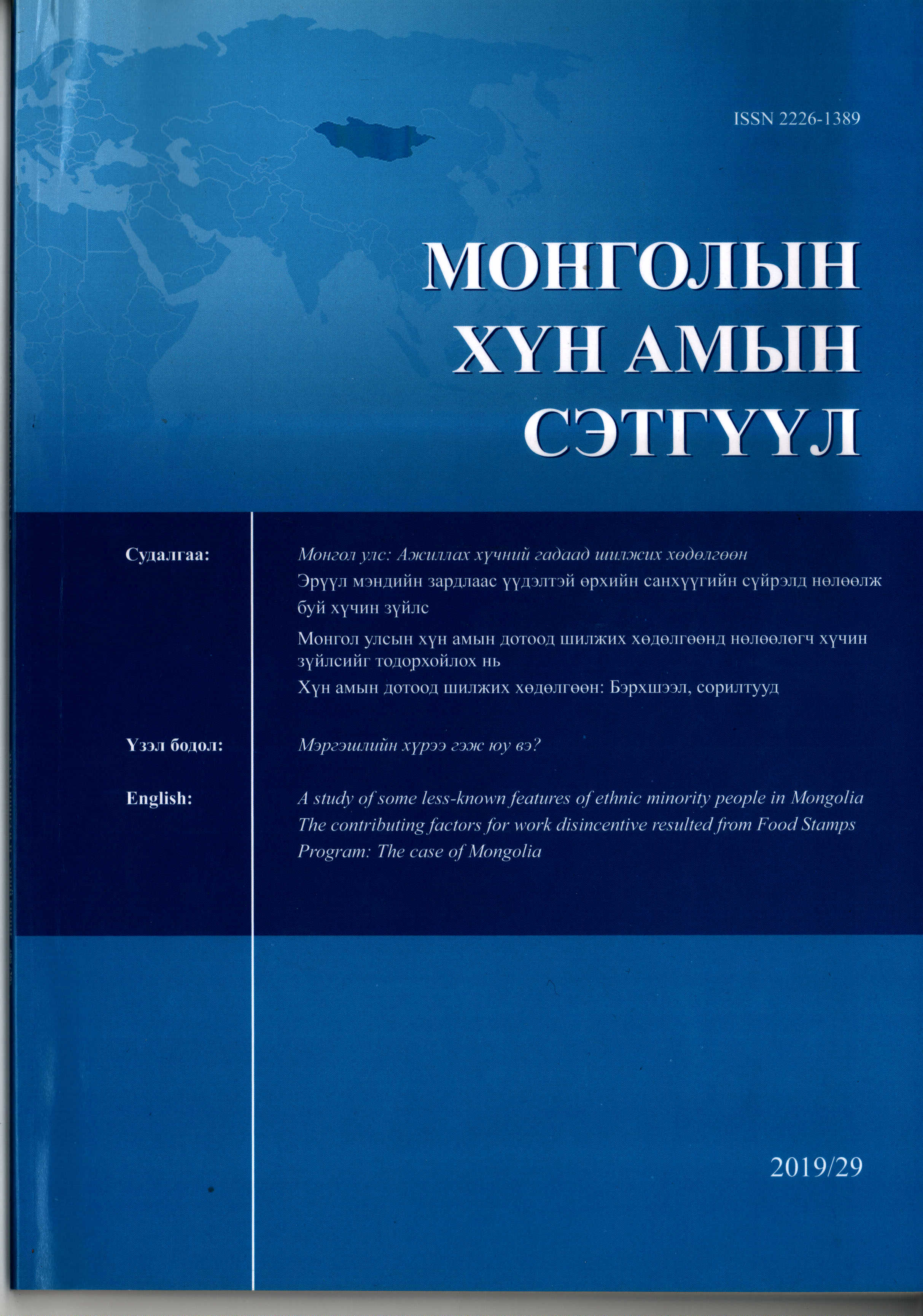A multilevel longitudinal analysis of teaching effectiveness in case of Mongolian private university
Main Article Content
Abstract
Энэ судалгаа нь Монголын нэгэн хувийн их сургуулийн тасралтгүй 11 жилийн хугацаанд цуглуулсан оюутны үнэлгээний мэдээлэл дээр тулгуурлан сургалтын үр ашгийн өсөлтийг судалсан. Оюутны үнэлгээний дата нь 2005-2006 оны хичээлийн жилээс 2015-2016 оны хичээлийн жилийн хугацаанд авсан нийт 62 багшийг үнэлсэн 87,555 оюутны үнэлгээний асуулгыг багтаасан бөгөөд олон шатлалт урт хугацааны шинжилгээний аргыг ашиглан дүн шинжилгээ хийсэн болно.
Судалгааны үр дүнгээс харахад 11 жилийн хугацаанд тус их сургуулийн сургалтын үр өгөөж нь статистик ач холбогдолтойгоор сайжирсан байна. Мөн багшилсан жил, багшийн нас, хүйс, боловсролын түвшин зэрэг нь оюутны үнэлгээнд нөлөө үзүүлдэггүй болох нь тодорхойлогдсон. Сургалтын үр өгөөж нь цаг хугацааны явцад өөрчлөгдөж, багш нарын сургалтын үр өгөөж хоорондоо харилцан адилгүй байна. Судалгааны эхэн үед оюутны үнэлгээгээр доогуур үнэлгээтэй байсан багш нар илүү өндөр үнэлгээтэй байсан багш нартай харьцуулахад илүү их өсөлттэй байна. Багшийн сургалтын ажлыг үнэлэх оюутны үнэлгээнд хичээлийн төрөл, оюутны тоо, хичээлийн улирал зэрэг хүчин зүйлүүд нь мөн чухал нөлөө үзүүлдэг байна.
This study examined the growth trajectory of teaching e ectiveness at one particular higher education in- stitution in Mongolia based on student rating data collected over 11 consecutive years. The student rating data covers 87,555 questionnaires evaluating 62 teachers rating collected over the period from 2005-2006 academic year to 2015-2016 was analyzed employing a multilevel longitudinal analysis method.
The results show that that the teaching e ectiveness of the private university in Mongolia which was se- lected in this study improved signi cantly over an 11-year period. Teaching experience, age, gender and academic degree which are three measures of seniority found to have no signi cant e ect on the student ratings. The study ndings also reveal that teaching e ectiveness varies over time and that teachers di er from each other in terms of teaching e ectiveness. Moreover, there is a strong negative relationship be- tween the initial status and the rates of change which means teachers who have lower starting points tend to have higher growth rate compared to teachers with higher starting points. The three variables of course type, number of students, and semester have the signi cant relationship with the student ratings of teaching effectiveness.
